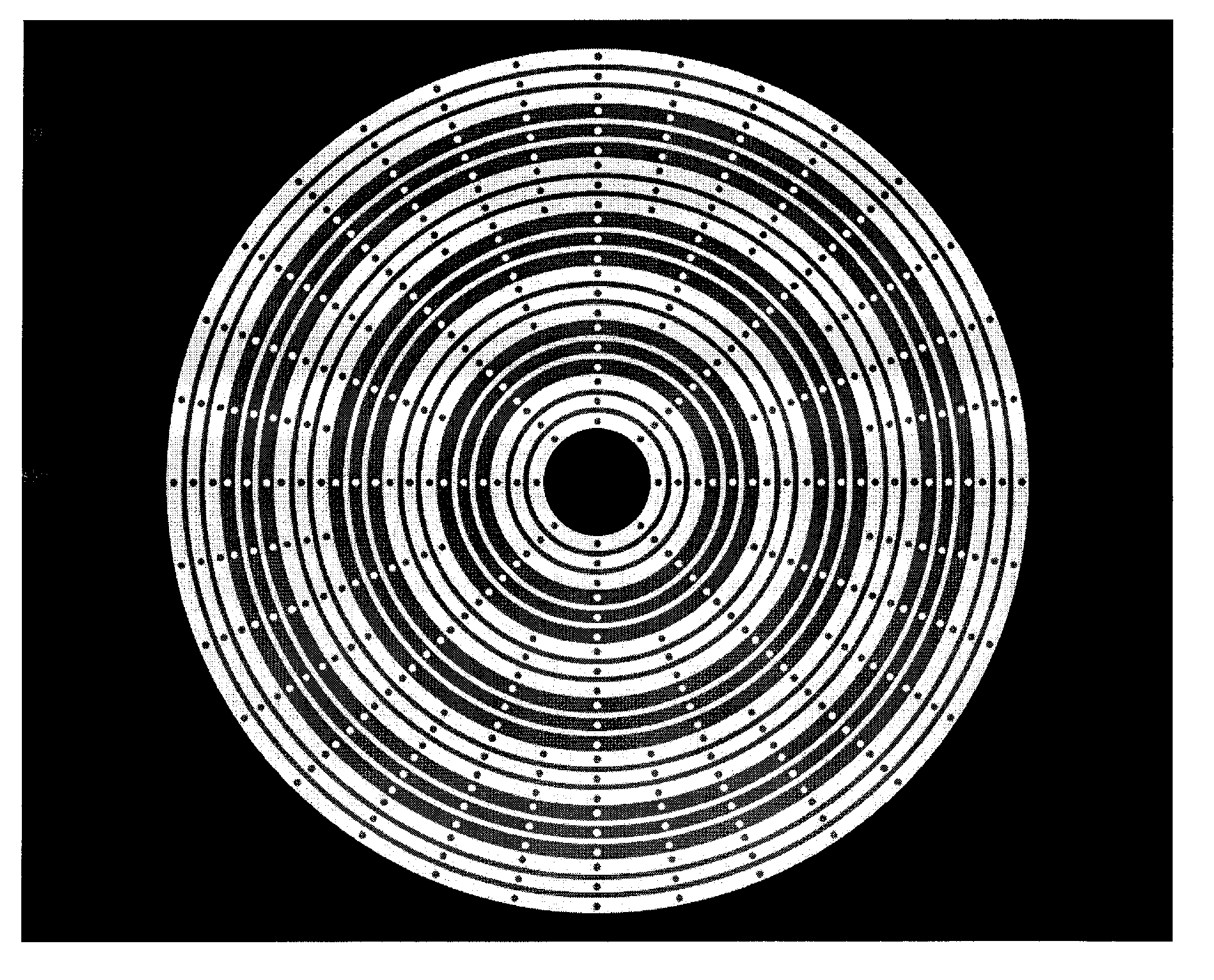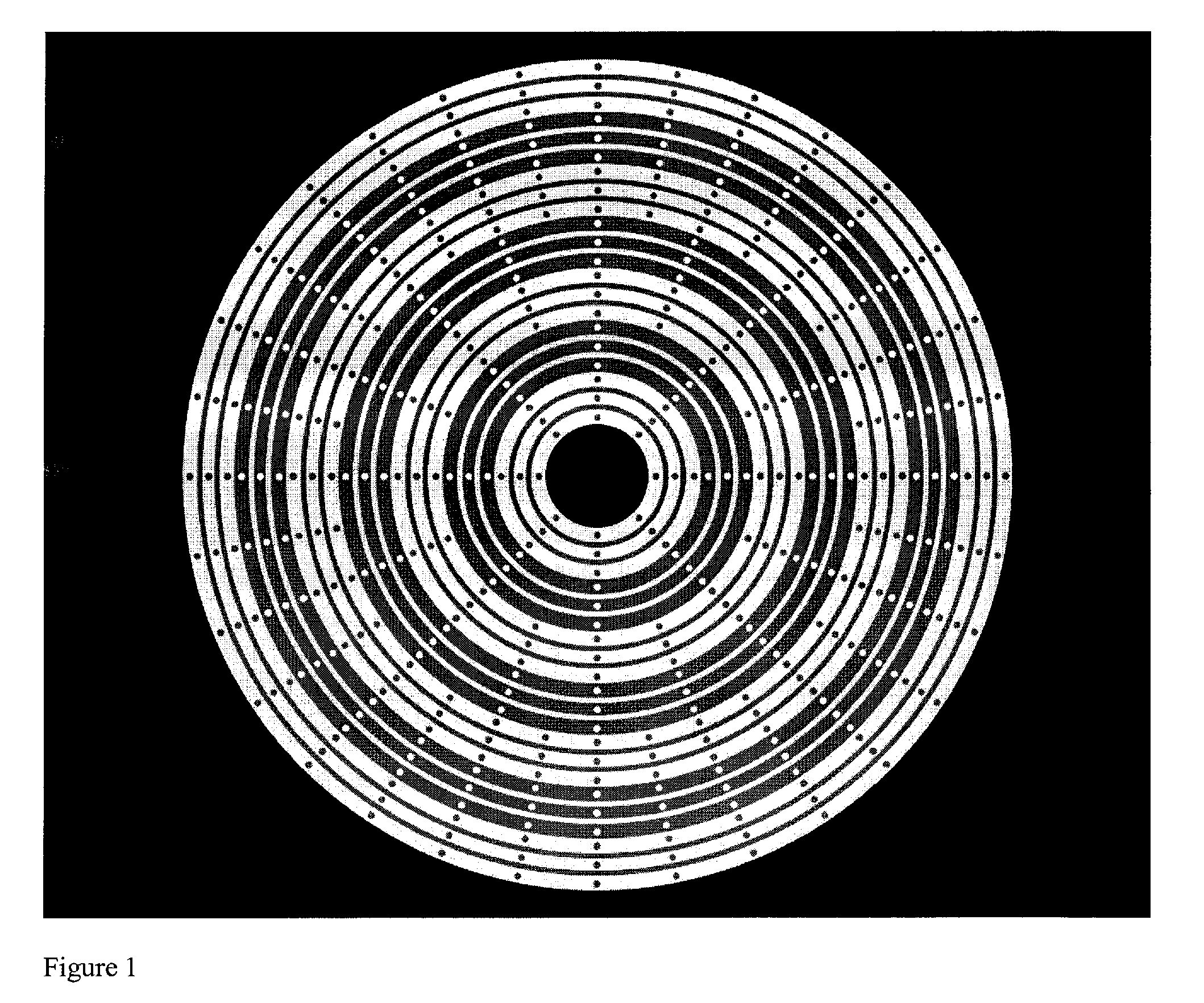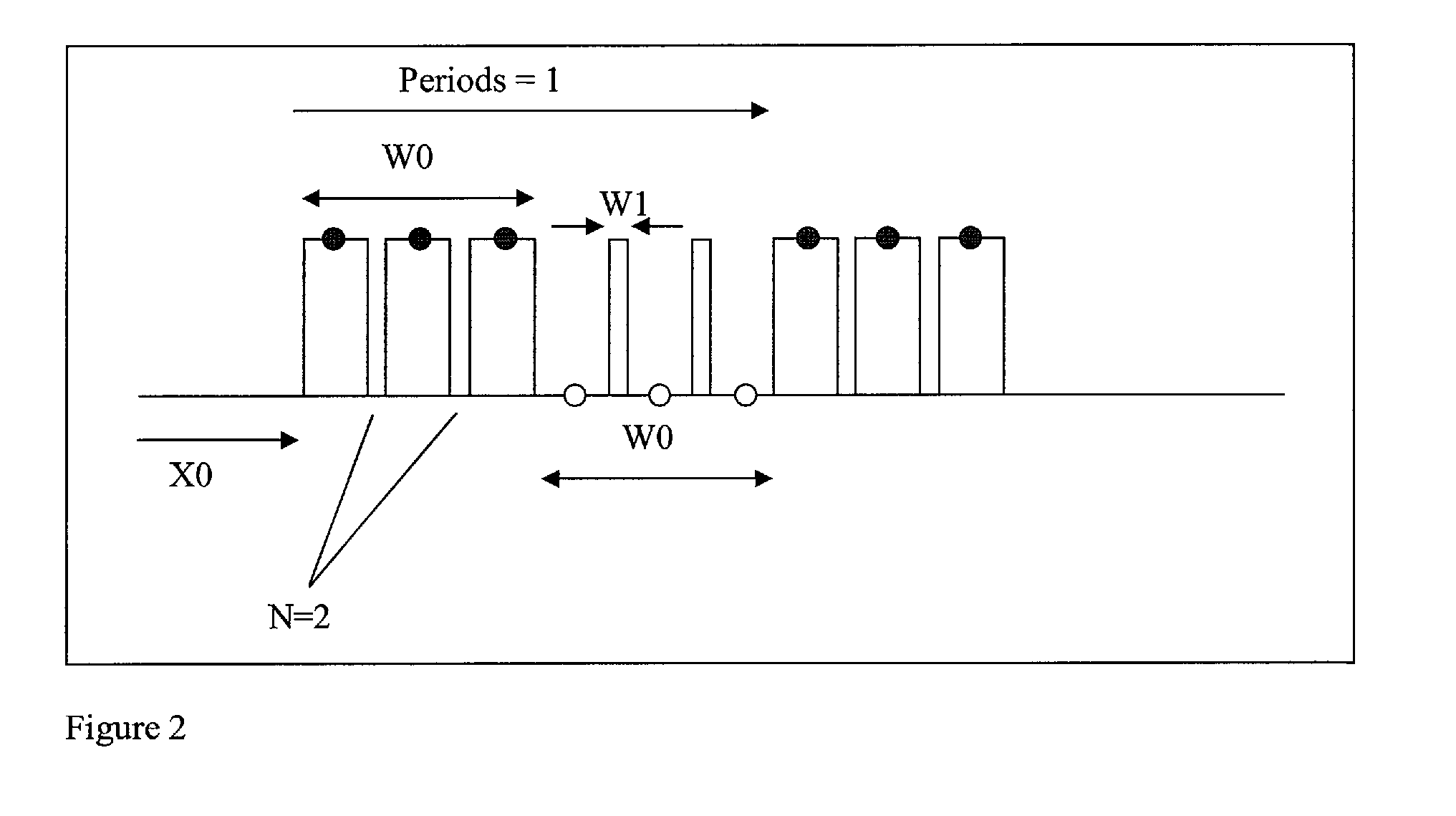Continuous two-dimensional corneal topography target
a topography target and two-dimensional technology, applied in the field of eye examination, can solve the problems of not becoming popular in commercial systems, difficult to know the exact point correspondence between a point on the reflected pattern source and its image reflected off the cornea, and the set of point correspondences that are not always correct, so as to improve surface reconstruction and image processing. robust
- Summary
- Abstract
- Description
- Claims
- Application Information
AI Technical Summary
Benefits of technology
Problems solved by technology
Method used
Image
Examples
Embodiment Construction
This application discloses a two-dimensional reflection pattern suitable for corneal topography wherein the reflection pattern has contrasting circles to better support the direct measurement of skew rays. Co-pending application Ser. No. 12 / 357,002, contents of which are incorporated herein by reference, discloses the use of two-dimensional reflection patterns.
Skew rays occur when a portion of a target reflects of a portion of a cornea such that the surface normal at the cornea is not contained in the meridional plane of the corneal point. This can happen, for example, on the side of a corneal bump such as that caused by keratoconous. To directly measure the skew ray angle, we add contrasting circles along certain meridians of the multi-resolution target. This is illustrated in FIG. 1 depicting multi-resolution corneal topography pattern with contrasting circles placed at various meridians and starting at various radial distances.
The contrasting circles are located between the high-...
PUM
 Login to View More
Login to View More Abstract
Description
Claims
Application Information
 Login to View More
Login to View More - R&D
- Intellectual Property
- Life Sciences
- Materials
- Tech Scout
- Unparalleled Data Quality
- Higher Quality Content
- 60% Fewer Hallucinations
Browse by: Latest US Patents, China's latest patents, Technical Efficacy Thesaurus, Application Domain, Technology Topic, Popular Technical Reports.
© 2025 PatSnap. All rights reserved.Legal|Privacy policy|Modern Slavery Act Transparency Statement|Sitemap|About US| Contact US: help@patsnap.com



